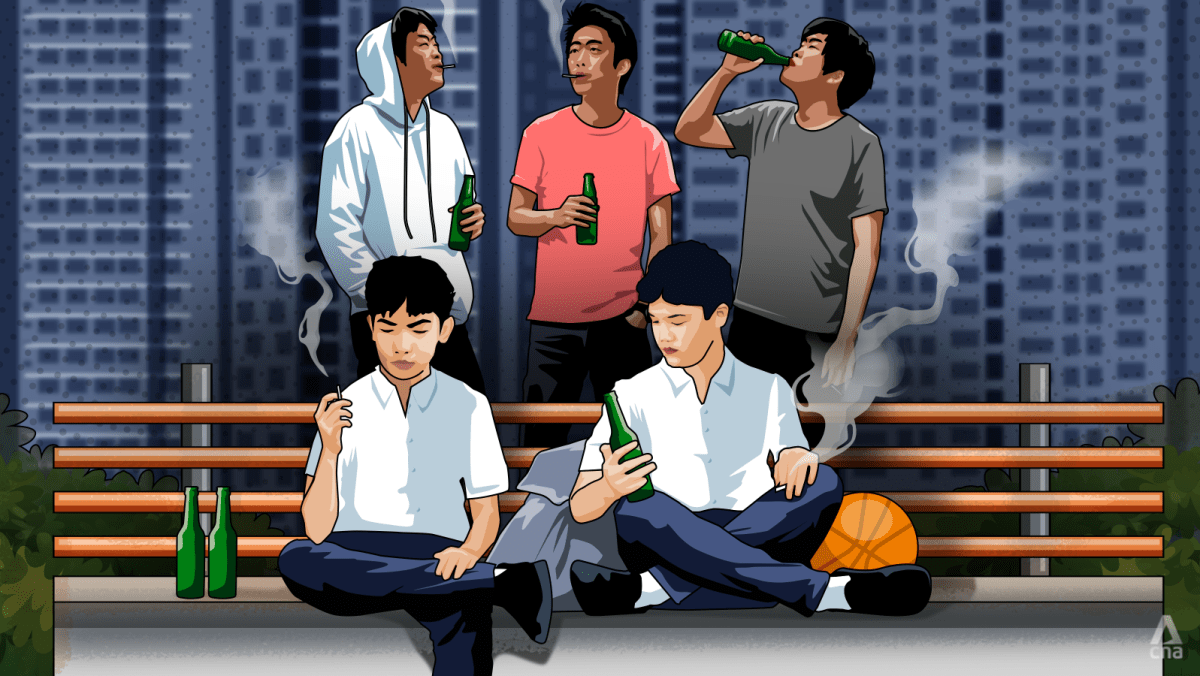ISSUES AT HOME AND IN SCHOOL
The Care Corner non-profit runs a street outreach programme where social workers go to places where youths hang out, such as void decks, playgrounds, parks and malls.
This was how Ms Lam and other social workers met Dylan and Lucas, as well as their headman, in 2023.
When approaching a teen on the street, there is no surefire way of knowing if he is in a gang, until the social workers get to know him better.
But there are usually some indicators, like the time at which the youth is out (which could be late or during school hours), his lingo, familiarity with street hand signs and behaviours like vaping.
Another characteristic is when his primary caregiver is someone other than his own father or mother.
For Dylan and Lucas, “home is not really a place that they want to spend a lot of time in, so that’s why they really go out to the streets to find social connection”, said Ms Lam.
Lucas lives with his father and grandparents, and his primary caregiver is his grandmother. His parents are divorced, and he sees his mother occasionally.
He described his father as more like a brother to him. “He sometimes says, you do what you want,” said Lucas.
He recalled a time he had to be questioned by the police about his involvement in a bicycle theft. His father matter-of-factly passed on the message and went with him to the police station.
Parent and child spoke to the investigation officer separately. After that, Lucas’ father did not discipline him or say anything about the incident.
Dylan, meanwhile, lives with his mother and sister. His parents are divorced, and they have lost touch with his father.
Dylan used to be angry with his father for leaving, and once hoped he would get in touch again. But the teen now “cannot be bothered” to find out how his father is doing.
Dylan’s mother provides some structure and semblance of a family life, but is busy with other responsibilities like working and caring for his sister, and has not always been able to guide him, said Ms Lam.
Both boys’ families do not know of their gang involvement.
Lucas said he was terrified his grandmother would be angry and disappointed. Ditto for Dylan, who remains close to his mother and has told her everything except “what I do outside, those bad things, like smoking, drinking”.
At school, both boys sometimes got into trouble with their teachers and skipped classes to ride their bicycles together. Their grades have suffered.
Lucas said his teachers would “talk s**t” behind his back and “purposely try to disturb me for no reason”.
In both home and school settings, the boys were already labelled in certain ways by the adults in their lives. Out in society, they also tended to be seen as “rowdy” and “disruptive”, said Ms Lam.
So the gang became their practice ground for fulfilling what she called a “developmental need”.
“Everybody has to learn how to interact with others in society and figure out who they are, what values guide their decisions,” said the social worker.
“If it’s not school, if it’s not family – (where there’s) more chance for error, less price to pay when you make a mistake – it will be then the society itself.”
The gang becomes “the next most structured environment” where youths can learn about social order and hierarchy, and “test out different personalities, different identities, different ways to engage, different ways to explain their point of view”, said Ms Lam.
